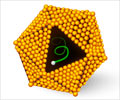When things go right, transplanted healthy liver cells transplanted by infusion or injection will find their way to the liver, integrate into the damaged tissue, start proliferating,
When things go right, transplanted healthy liver cells transplanted by infusion or injection will find their way to the liver, integrate into the damaged tissue, start proliferating, and take over the liver's work of helping with digestion and removing waste products and worn-out cells from the blood.
Hepatocyte transplantation has been successful in a number of animal models, raising hopes that use of cells could overcome the shortage of donor livers and the problems of surgery, but the procedure has not been as successful in humans. Was the problem related to the age of the donor?Now scientists at the Martin Luther University Hale-Wittenberg, Germany, believe they know the answer. Age of the donor makes no difference but age of the recipient makes a big one. Many humans requiring liver transplantation are older.
The German study conducted in rats found that older rats had a repopulation rate of only 2 percent, ten times less than that seen in younger ones. Furthermore, found the scientists, the transplanted cells worked equally well in the old and young animals, as measured by glycogen storage, but the younger animals had significantly higher levels of a growth factor needed for proliferation.
The new study is the first to offer a possible mechanism for the failure of transplanted hepatocytes to proliferate in many human patients – and the first to suggest a way to compensate for the problem.
Dr. Peggy Stock, a postdoctoral fellow in the laboratory of Dr. Bruno Christ, reported the study on April 19 at Experimental Biology 2009 in New Orleans. The presentation was part of the scientific program of the American Society for Investigative Pathology.
The researchers isolated hepatocytes from both four week old rats (the equivalent age of a human child) and rats more than 35 weeks old (40 to 50 years in humans). These healthy liver cells were then implanted into the livers of young rats (10 weeks, the equivalent of young adulthood) and "senescent" rats (more than 35 weeks).
Advertisement
Repopulation of hepatocytes was 20 percent in young rats, whether the cells came from a young or old donor. In older rats, by contrast, repopulation was only 2 percent.
Advertisement
The next step, say Dr. Stock and Dr. Christ, is to inject IGF1 in old rats and see if this pretreatment would increase the proliferation levels of hepatocyte cells.
Source-Eurekalert
SRM















